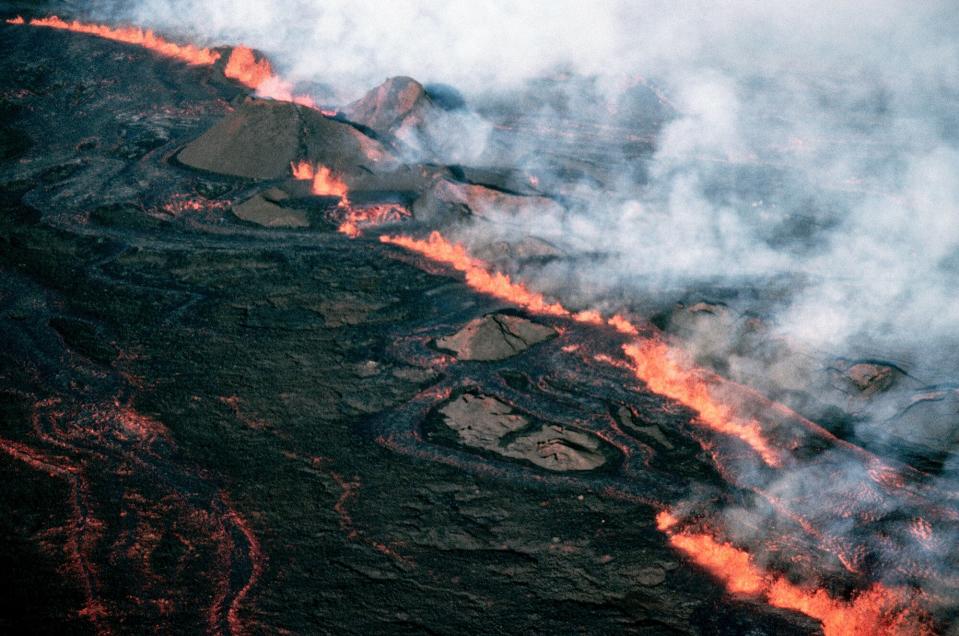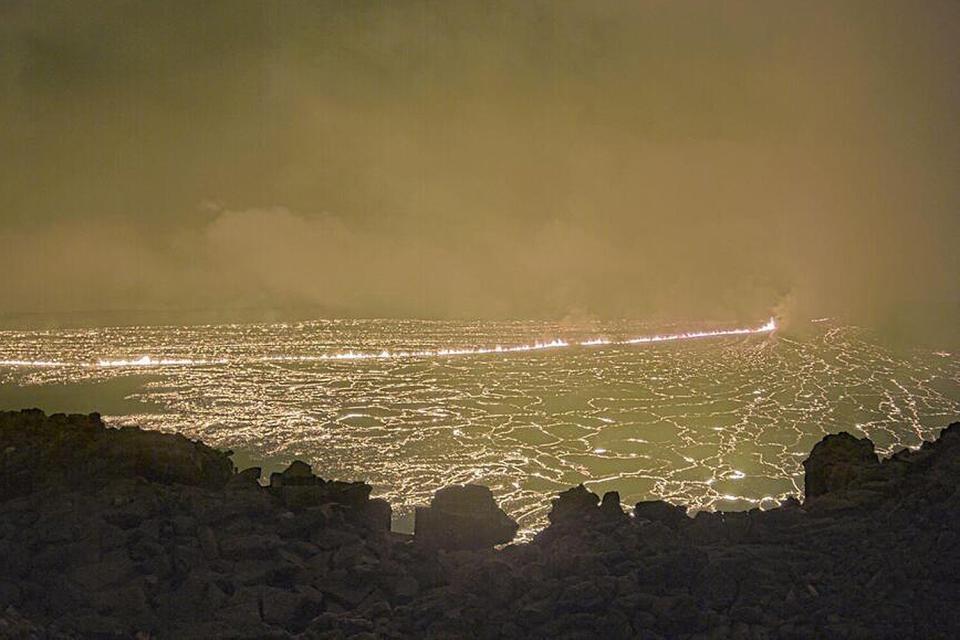Hawaii's Mauna Loa, the World's Largest Active Volcano, Is Erupting For First Time in 38 Years

Mauna Loa, one of the world's largest active volcanoes, is erupting for the first time in 38 years on Hawaii's Big Island.
The eruption began in Moku'āweoweo, the summit caldera of Mauna Loa, around 11:30 p.m. local time on Sunday, according to the National Weather Service in Honolulu.
The Hawaii Emergency Management Agency said there have been "some reports of lava overflowing" into the southwest portion of the caldera, but said "there are NO indications" that the flow poses a threat to populated areas.
Meanwhile, an Ashfall Advisory has been issued for the island through 10 a.m. Monday morning, with up to a quarter-inch of ash expected downwind of the volcano, according to Hawaii EMA.
The NWS warned that winds may carry hazards such as volcanic gas, fine ash and "Pele's hair," a phenomenon named after the Hawaiian goddess of volcanoes that creates thin glass fibers during an eruption.

CORBIS/Corbis via Getty
Hawaii County has opened shelters in Ka'u at the Robert Herkes Gymnasium in Pahala, and at the Old Airport Gymnasium at Kailua Park in Kailua-Kona, according to the Hawaii County Civil Defense Agency.
Never miss a story — sign up for PEOPLE's free daily newsletter to stay up-to-date on the best of what PEOPLE has to offer, from juicy celebrity news to compelling human interest stories.
Mauna Loa is coming off its "longest quiet period on record," according to the U.S. Geological Survey. The last eruption occurred in 1984, with lava flow that missed the largest population center of the island by 4.5 miles.

AP/Shutterstock
Mauna Loa's recent stretch of "heightened unrest" began in mid-September, according to the USGS. At the time, earthquakes around the volcano had increased from 10 to 20 per day to 40 to 50 per day.
In October, the Hawaii Volcanoes National Parks Service closed the summit backcountry indefinitely "due to elevated seismic activity."
RELATED: 'Safe Fireball' Lights Up Sky Over the U.S. and Canada — See Video
Hazards typically associated with Mauna Loa eruptions include "voluminous, fast-moving lava flows," volcanic gas, dense smog and "potentially large and destructive earthquakes," according to the USGS.
"Mauna Loa typically erupts lava at a very high rate, similar to the 2018 eruption of Kīlauea," the agency said on its website.
Approximately half of Mauna Loa's eruptions "remain confined to [the] summit area" and do not threaten nearby communities, per the USGS.


